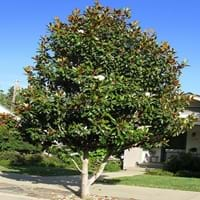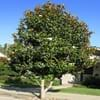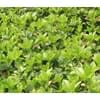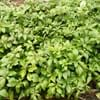Life Span
Perennial
Perennial
Type
Broadleaf Evergreen
Vegetable
Origin
Southeastern United States
World/Pandemic, North America, Europe, Russia/Siberia, Northern Africa, Asia, India
Types
Not available
Not Available
Habitat
marshes, Marshy ground, Swamps
Cropland, Farms, gardens
USDA Hardiness Zone
6-10
Not Available
AHS Heat Zone
Not Available
Not Available
Sunset Zone
21,22
A1, A2, A3, H1, H2, 1a, 1b, 2a, 2b, 3a, 3b, 4, 5, 6, 7, 8, 9, 10, 11, 12, 13, 14, 15, 16, 17, 18, 19, 20, 21, 22, 23, 24
Habit
Pyramidal
Upright/Erect
Flower Color
White
White, Yellow green
Flower Color Modifier
Bicolor
Bicolor
Fruit Color
Red
Not Available
Leaf Color in Spring
Dark Green
Not Available
Leaf Color in Summer
Dark Green
Green, Gray Green
Leaf Color in Fall
Dark Green
Green, Gray Green, Yellow green
Leaf Color in Winter
Dark Green
Not Available
Leaf Shape
Pyramidal
Linear
Plant Season
Spring, Summer, Fall, Winter
Not Available
Sunlight
Full Sun, Partial Sun
Full Sun, Partial Sun
Type of Soil
Clay, Loam, Sand
Loam, Sand
The pH of Soil
Acidic, Neutral
Neutral
Soil Drainage
Well drained
Well drained
Bloom Time
Early Spring, Spring, Late Spring, Early Summer, Summer, Late Summer
Late Spring, Early Summer
Tolerances
Pollution, Drought
Drought
Where to Plant?
Ground, Pot
Ground, Pot
How to Plant?
Layering, Semi-ripe cuttings, Softwood cuttings
Seedlings, Sets
Plant Maintenance
Low
Medium
Watering Requirements
Provide sufficient water to saturate the root zone, Requires regular watering, Water when soil is dry
Keep the ground moist but not water-logged, Requires a lot of watering, Water twice a day in the initial period
In Summer
Less Watering
Lots of watering
In Spring
Drought Tolerant
Moderate
In Winter
Average Water
Average Water
Soil pH
Acidic, Neutral
Neutral
Soil Type
Clay, Loam, Sand
Loam, Sand
Soil Drainage Capacity
Well drained
Well drained
Sun Exposure
Full Sun, Partial Sun
Full Sun, Partial Sun
Pruning
Remove damaged leaves, Remove dead branches, Remove dead leaves
Remove damaged leaves, Remove dead branches, Remove dead leaves
Fertilizers
All-Purpose Liquid Fertilizer
All-Purpose Liquid Fertilizer
Pests and Diseases
Birds, Squirrels
Red blotch
Plant Tolerance
Drought
Drought
Flower Petal Number
Single
Single
Fragrant Bark/Stem
No
Yes
Foliage Texture
Coarse
Medium
Foliage Sheen
Glossy
Matte
Attracts
Birds, Rabbits, Squirrels
Not Available
Allergy
allergic reaction, Asthma, Runny nose
no allergic reactions
Aesthetic Uses
Beautification, Cottage Garden, Landscape Designing, Showy Purposes
Not Used For Aesthetic Purpose
Beauty Benefits
Anti-ageing, Beautiful Skin, Blood purifying, Treatment of Dark Spots
Not Available
Environmental Uses
Air purification
Air purification
Medicinal Uses
Alzheimer’s Disease, anti-cancer, Anxiety, Asthma, Diabetes, Liver problems, Menstrual Cramps
Asthma, Bronchitis, cholesterol-lowering, Cough, Diabetes, Digestion problems, Diuretic, High blood pressure
Part of Plant Used
Flowers
Whole plant
Other Uses
Air freshner, Grown for shade
Culinary use
Used As Indoor Plant
Yes
Yes
Used As Outdoor Plant
Yes
Yes
Garden Design
Container, Feature Plant, Landscape, Shade Trees, Street Trees
Edible, Herb / Vegetable
Botanical Name
MAGNOLIA grandiflora
ALLIUM cepa 'Burgundy'
Common Name
Magnolia grandiflora, bull bay
Garden Onion, Red Onion
In Hindi
Magnolia grandiflora
लाल प्याज
In German
Immergrüne Magnolie
Rote Zwiebel
In French
Magnolia à grandes fleurs
Oignon rouge
In Spanish
Magnolia grandiflora
Cebolla roja
In Greek
Magnolia grandiflora
Κόκκινο κρεμμύδι
In Portuguese
Magnólia-branca
Cebola vermelha
In Polish
Magnolia wielkokwiatowa
Czerwona cebula
In Latin
Magnolia grandiflora
Red Cepa
Phylum
Magnoliophyta
Magnoliophyta
Class
Magnoliopsida
Liliopsida
Order
Magnoliales
Liliales
Family
Magnoliaceae
Liliaceae
Clade
Angiosperms, Magnoliids
Angiosperms, Monocots
Tribe
Not Available
Not Available
Subfamily
Magnolioideae
Allioideae
Number of Species
Not Available
Importance of Southern Magnolia and Red Onion
Want to have the most appropriate plant for your garden? You might want to know the importance of Southern Magnolia and Red Onion. Basically, these two plants vary in many aspects. Compare Southern Magnolia and Red Onion as they differ in many characteristics such as their life, care, benefits, facts, etc. Every gardener must at least have the slightest clue about the plants he wants to plant in his garden. Compare their benefits, which differ in many ways like facts and uses. The medicinal use of Southern Magnolia is Alzheimer’s Disease, anti-cancer, Anxiety, Asthma, Diabetes, Liver problems and Menstrual Cramps whereas of Red Onion is Asthma, Bronchitis, cholesterol-lowering, Cough, Diabetes, Digestion problems, Diuretic and High blood pressure. Southern Magnolia has beauty benefits as follows: Anti-ageing, Beautiful Skin, Blood purifying and Treatment of Dark Spots while Red Onion has beauty benefits as follows: Anti-ageing, Beautiful Skin, Blood purifying and Treatment of Dark Spots.
Compare Facts of Southern Magnolia vs Red Onion
How to choose the best garden plant for your garden depending upon its facts? Here garden plant comparison will help you to solve this query. Compare the facts of Southern Magnolia vs Red Onion and know which one to choose. As garden plants have benefits and other uses, allergy is also a major drawback of plants for some people. Allergic reactions of Southern Magnolia are allergic reaction, Asthma and Runny nose whereas of Red Onion have no allergic reactions respectively. Having a fruit bearing plant in your garden can be a plus point of your garden. Southern Magnolia has showy fruits and Red Onion has no showy fruits. Also Southern Magnolia is not flowering and Red Onion is not flowering . You can compare Southern Magnolia and Red Onion facts and facts of other plants too.





